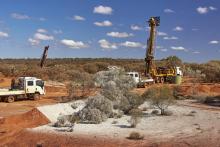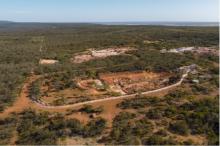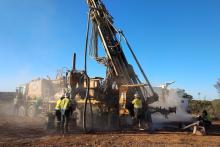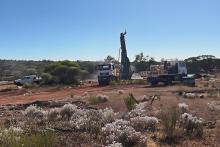Some old-fashioned detective work has set Terrain Minerals on a pathway to try and emulate Sirius Resources’ 2012 discovery of the hulking Nova-Bollinger deposit in WA’s Fraser Range. Terrain says its search through old geophysical records identified an intriguing “eye-shaped” feature near its ground similar to the one that led to the Nova-Bollinger base metals discovery – just 300km to the north on the same geological structure.

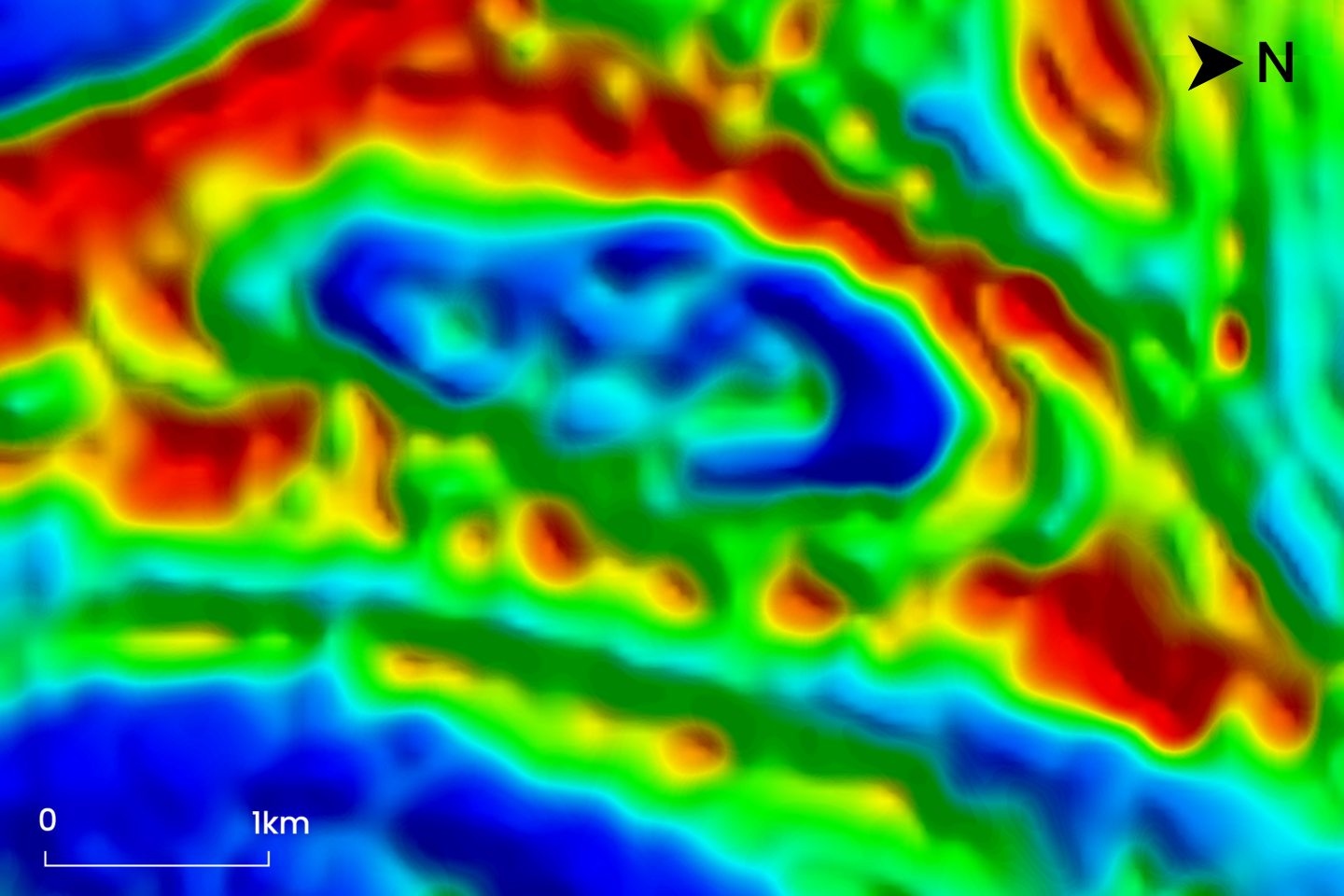
Some good, old-fashioned detective work has set Terrain Minerals on a pathway to try and emulate Sirius Resources’ 2012 discovery of the hulking Nova-Bollinger deposit in Western Australia’s rugged Fraser Range.
Terrain says a search late last year through old WA Government geophysical records identified an intriguing “eye-shaped” feature near its ground similar in appearance to the one that led to the Nova-Bollinger base metals discovery – just 300km to the north and on the same geological structure. The company defined the feature in aeromagnetic imagery as a north/north-east-trending ovoid or lensoid feature about 6km long, which is comparable with the 5km-long and strikingly-similar signature at Nova.
The company today told Bulls N’ Bears that its attention was further drawn to the feature by airborne electromagnetic (AEM) data flown by Geoscience Australia that showed a single line of EM data transecting the southern extremity of the aeromagnetic feature. It has interpreted the EM signature as an “EM conductor” that could imply the presence of metalliferous sulphide mineralisation.
The discovery prompted Terrain to lodge a new exploration licence application to secure the land that includes the feature and it was granted last week. Contiguous with the company’s three existing licences, the recent addition brings Terrain’s total Lort River project to four licences enclosing a total area of 640 square kilometres.
The company’s exploration manager Ben Bell, who found the eye feature in a speculative initial data search, said he later canvassed several independent associates for their opinion. He said none of them could find a reason why the structure would not be mineralised, but it was now up to Terrain to prove that it is and the earliest of comparisons with Nova were building his optimism.
Sirius drilled the Nova discovery hole in July 2012 and a maiden resource was released in May 2013. The nearby Bollinger deposit was discovered during the same period in February 2013.
The combined indicated and inferred resource for the two deposits is a massive 14.3 million tonnes at 2.3 per cent nickel, 0.9 per cent copper and 0.08 per cent cobalt. In the 2023 financial year, Nova achieved total production of 22,915 tonnes of nickel, 10,266 tonnes of copper, and 803 tonnes of cobalt.
Bell said: “We haven’t been able to find any reason why it couldn’t be what we think it is, but now we just have to prove it. I believe there are sulphides down in that area and I believe these eye structures are important, it just comes down to whether you have thickness and grade.”
Terrain’s Lort River project lies just 50km north of Esperance at the extreme south end of the massive Albany-Fraser orogenic belt and collision zone. The belt is a major 550km-by-50km orogenic tectonic suture between the Archaean Yilgarn Craton and the Proterozoic Albany-Fraser province and effectively defines the craton’s southern and south-eastern margins.
It is home to several significant mineral discoveries including the 5-million-ounce Tropicana Gold project owned by AngloGold Ashanti’s joint venture (JV) with Regis Resources, in addition to IGO’s 100 per cent-owned Nova-Bollinger operation and its 2019 zinc-copper, volcanic-hosted massive sulphide (VMS) discovery at Andromeda (north of Nova) – which was the first VMS prospect of significance in the Albany-Fraser belt.
The Nova-Bollinger discovery came after Sirius recognised the significance of an “eye-shaped” feature in its aeromagnetic imagery over its Fraser Range ground. It was then proven up by drilling coincident geochemical and electromagnetic anomalies on the north-western side of the structural feature it had observed.
Interestingly, the Andromeda discovery was made through a similar method. with a moving loop electromagnetic (MLEM) survey over a structural ellipse that picked up a conductive plate 450m from surface. IGO describes it as having characteristics consistent with Besshi‐style VMS deposits.
Andromeda sits on the margin between the 1600 to 1310 million-year-old Arid Basin and the 1310 to 1280 million-year-old Fraser Zone.
Terrain is now keen to make a more thorough assessment of its recent find and has immediate plans to run airborne and ground EM surveys over the eye-shaped structure, with a view to testing it with the drill bit before year’s end.
Bulls N’ Bears has also found that it is also becoming apparent through available literature that similar lensoidal or eye geophysical signatures may be a common exploration target indicator in the terrain. It means clusters of important deposits could be arrayed along the major structural belt that arguably holds a place among the most prominent features of its type in Australia.
Bell also said part of his reasoning in running his initial search through the WA Government records was to see if the Albany-Fraser Belt could be favourably compared with Canada’s Thompson Belt, which has several discoveries spread widely apart.
But for now, all eyes will now be on Terrain as it embarks on an intriguing mission to try and wrap its hand around the tail of what it hopes is another Nova-like nickel monster.
Is your ASX-listed company doing something interesting? Contact: matt.birney@businessnews.com.au








